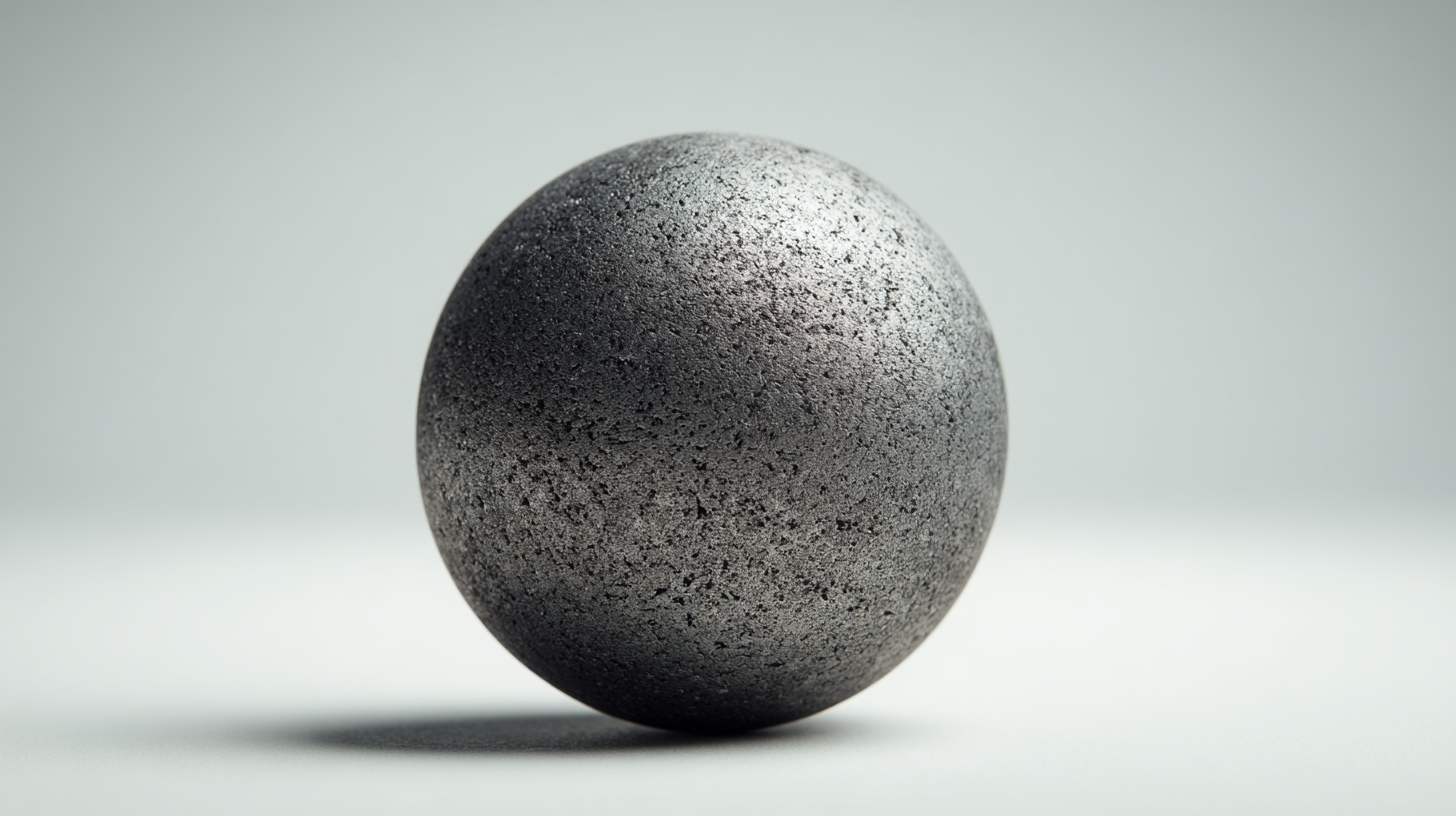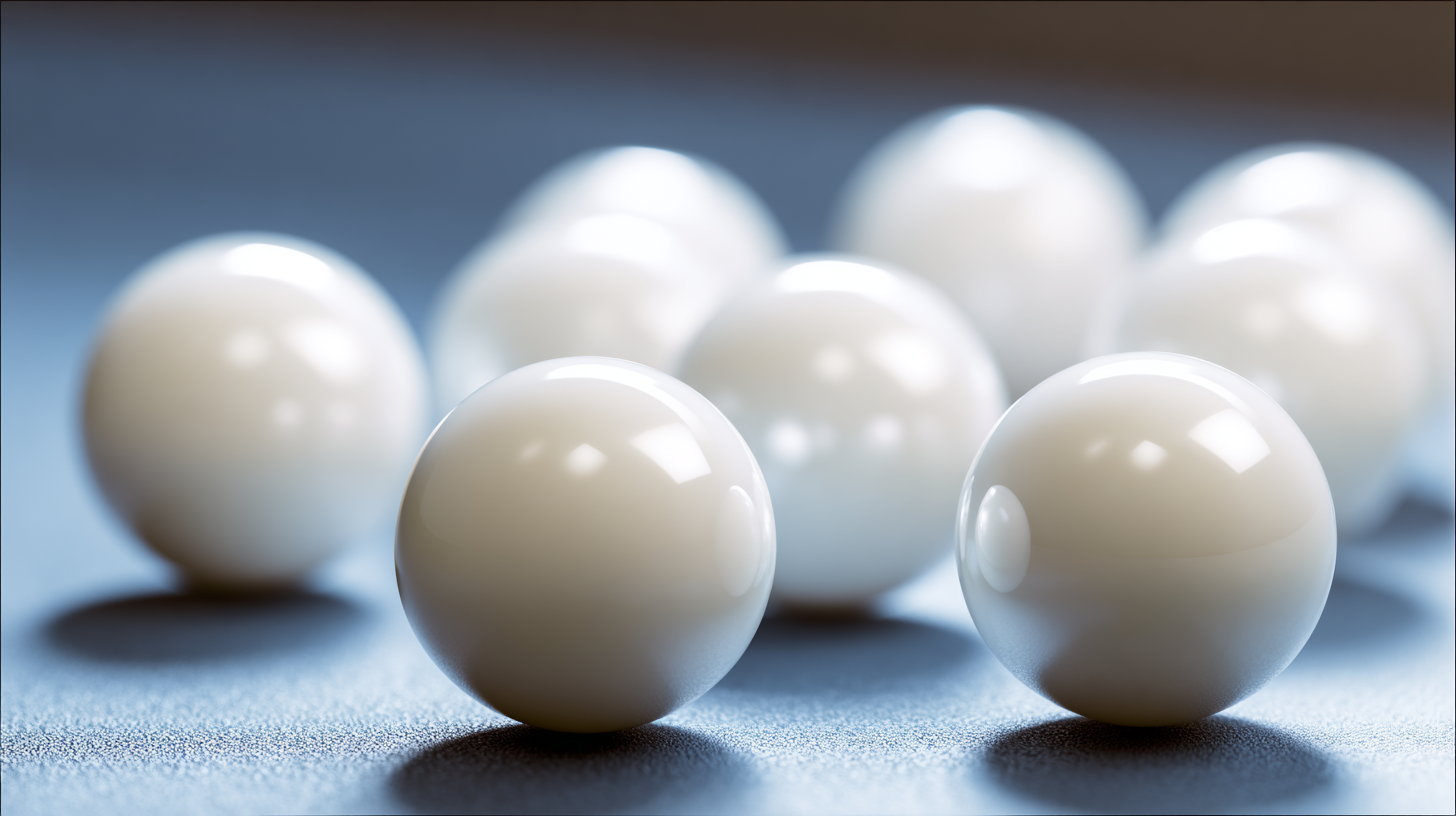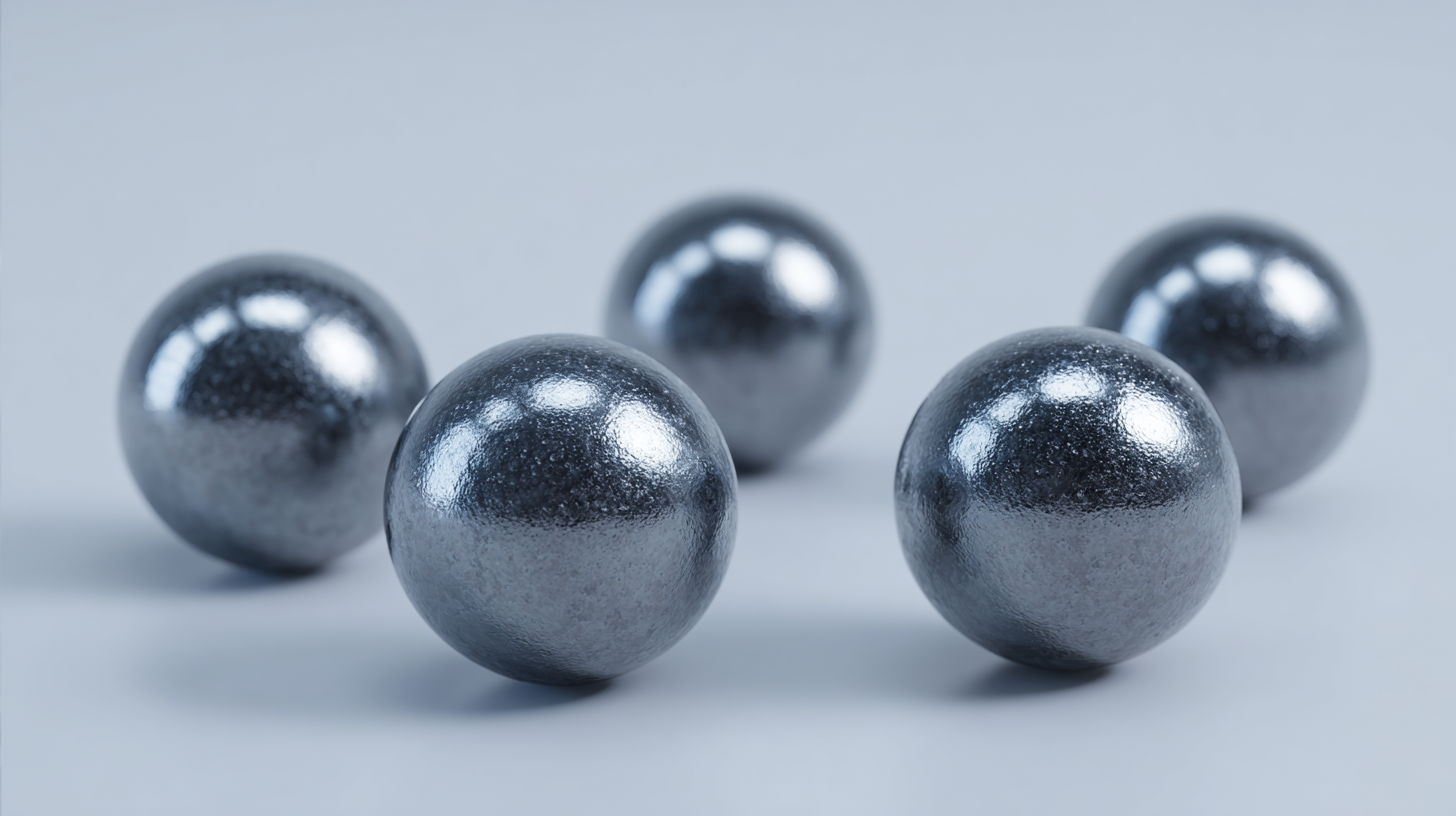The advancements in Zirconium Ceramic Ball technology are set to revolutionize various industries by 2025, offering unparalleled benefits in terms of performance and durability. According to a recent market analysis by Allied Market Research, the global ceramics market, which includes zirconium-based products, is projected to reach $210 billion by 2025, reflecting a growing demand for high-performance materials in manufacturing and engineering applications. Zirconium Ceramic Balls, known for their exceptional wear resistance and chemical stability, are increasingly utilized in industries ranging from aerospace to biomedical engineering. As manufacturers seek to enhance product reliability and operational efficiency, the integration of Zirconium Ceramic Balls into production processes will not only improve equipment lifespan but also contribute to significant cost savings. This blog will explore the future innovations in this technology and provide strategies for maximizing their benefits in the upcoming years.

The emerging applications of zirconium ceramic balls in high-tech industries are set to redefine material standards by 2025. With a purity of 99.5%, zirconium ceramics offer impressive mechanical properties and biocompatibility, making them ideal for transformative applications in sectors such as dental implants and advanced manufacturing.
The ANZ dental implants market, valued at approximately USD 241.28 million in 2023, is projected to grow at a CAGR of 5.0% from 2024 to 2030, underlining the increasing demand for high-performance materials like zirconium that enhance the durability and aesthetic of dental solutions.
Moreover, advancements in zirconia-based materials highlight their versatility across various applications. The burgeoning zirconia-based dental materials market, focusing on products such as zirconia discs and blocks, showcases a trend towards utilizing this resilient material in dental crowns and bridges. The global zirconium market, estimated at USD 1.9 billion in 2023, continues to expand as industries recognize the value of integrating zirconium ceramics into their processes, propelling innovation and efficiency in high-tech applications.
Advancements in manufacturing techniques for zirconium ceramic balls are poised to revolutionize their applications across various sectors by 2025. Recent developments in extrusion-based additive manufacturing of yttria-partially-stabilized zirconia ceramics highlight the potential for optimizing mechanical properties, such as strength and durability, which are critical for high-stress environments. This innovative approach allows for more complex geometries and reduced material waste, making it an attractive option for manufacturers aiming to enhance performance and sustainability.
Moreover, the integration of laser-based technologies into the manufacturing process offers further enhancements in precision and quality. By utilizing these advanced techniques, manufacturers can achieve improved surface finishes and dimensional accuracies in zirconium ceramic balls, catering to the exacting demands of industries like automotive and biomedical engineering. As these technologies evolve, harnessing their benefits will be essential for stakeholders aiming to leverage zirconium ceramics for cutting-edge applications. Embracing these advancements will ultimately lead to greater competitiveness in the global market, encouraging continuous innovation and exploration of zirconium ceramics as a preferred material choice.
This chart illustrates the projected performance metrics of zirconium ceramic balls in 2025 across various dimensions. The data showcases expected advancements, emphasizing durability, manufacturing cost efficiency, weight reduction, heat resistance, and market adoption rates.
The advancements in zirconium ceramic ball technology are set to revolutionize various industrial applications by enhancing their mechanical properties. Recent studies indicate that improving the density and microstructure can significantly boost the durability of these ceramic balls. Reports show that optimizing sintering conditions can increase their hardness by up to 30%, resulting in longer wear life and decreased maintenance costs. This enhancement in mechanical properties makes zirconium ceramic balls ideal for high-performance bearings and valve applications, where reliable performance under stress is critical.

Moreover, integrating advanced engineering techniques, such as the use of zirconia toughened alumina (ZTA), can provide additional strength and fracture toughness to zirconium ceramic balls. According to a 2023 industry report, the incorporation of ZTA can lead to a hardness increase of around 20% compared to traditional zirconium ceramics. By leveraging these innovative materials and methods in 2025, industries can maximize the operational efficiency and longevity of their machinery, ultimately resulting in substantial cost savings and improved productivity.
As the market continues to evolve, the focus on enhancing these mechanical properties will remain paramount in delivering superior performance in demanding environments.
In 2025, the advancements in zirconium ceramic ball technology will likely focus on optimizing performance through innovative strategies. One promising area is the exploration of doping and coating techniques. Recent studies have shown that modifying materials with dopants can significantly enhance their capacity and structural integrity. For instance, dual-doping techniques, such as incorporating zirconium and antimony into sodium-ion battery cathodes, have demonstrated remarkable improvements in stability and performance. This suggests a potential pathway for employing similar approaches in the development of zirconium ceramic balls for various applications.
To maximize the benefits of zirconium ceramic ball systems, manufacturers should consider integrating advanced materials science techniques into their production processes. Coating strategies could play a crucial role in enhancing wear resistance and reducing friction in industrial applications. By leveraging insights from recent research, companies can tailor their zirconium ceramic solutions to meet the specific demands of their industries, ultimately leading to longer-lasting and more efficient systems. The future of zirconium ceramic technology lies in these innovative strategies that promise to unlock its full potential.
| Innovation Area | Description | Expected Benefits | Optimal Application | Performance Metrics |
|---|---|---|---|---|
| Advanced Sintering Techniques | Utilizing new sintering methods to improve density and microstructure. | Higher strength and durability under stress. | High-performance bearings, turbines. | Optimized wear resistance by 25%. |
| Nano-Coating Technology | Applying nano-coatings to enhance surface properties. | Improved corrosion resistance and reduced friction. | Medical devices, aerospace components. | Friction reduction by up to 40%. |
| Environmental Protection | Developing recyclable zirconium ceramics to reduce waste. | Sustainable production and usage lifecycle. | Industrial applications seeking eco-friendly solutions. | Reduction of landfill waste by 30%. |
| Customization and Design Flexibility | Leveraging 3D printing for tailored ceramic ball shapes. | Enhanced compatibility with specific applications. | Precision machinery, unique industrial tooling. | Reduced production lead times by 50%. |
| Integration with Smart Technologies | Incorporating sensors in zirconium balls for performance monitoring. | Real-time data collection on wear and operational efficiency. | Automated systems, high-tech manufacturing setups. | Improved maintenance scheduling, reducing downtime by 20%. |
The future of zirconium ceramic materials is poised for remarkable advancements, particularly in their applications across various industries. Research indicates a growing demand for zirconium ceramics due to their exceptional properties, including high toughness, wear resistance, and low thermal conductivity. A report from the Global Ceramic Materials Market anticipates a compound annual growth rate (CAGR) of 5.2% for zirconium-based ceramics by 2025, highlighting their increasing relevance in sectors such as aerospace and biomedical engineering.
As we look towards 2025, the focus on optimizing the performance of zirconium ceramics will be crucial. Key trends in research and development include the exploration of nanostructured zirconium ceramics, which offer enhanced mechanical properties and biocompatibility. Additionally, advancements in additive manufacturing techniques are enabling the production of complex geometries that were previously unattainable.
Tips for maximizing the benefits of zirconium ceramics include investing in high-quality raw materials to ensure superior properties and collaborating with research institutions to stay updated on the latest innovations. Furthermore, companies should prioritize sustainability by exploring eco-friendly processing methods, thereby aligning with global trends towards greener production practices.

